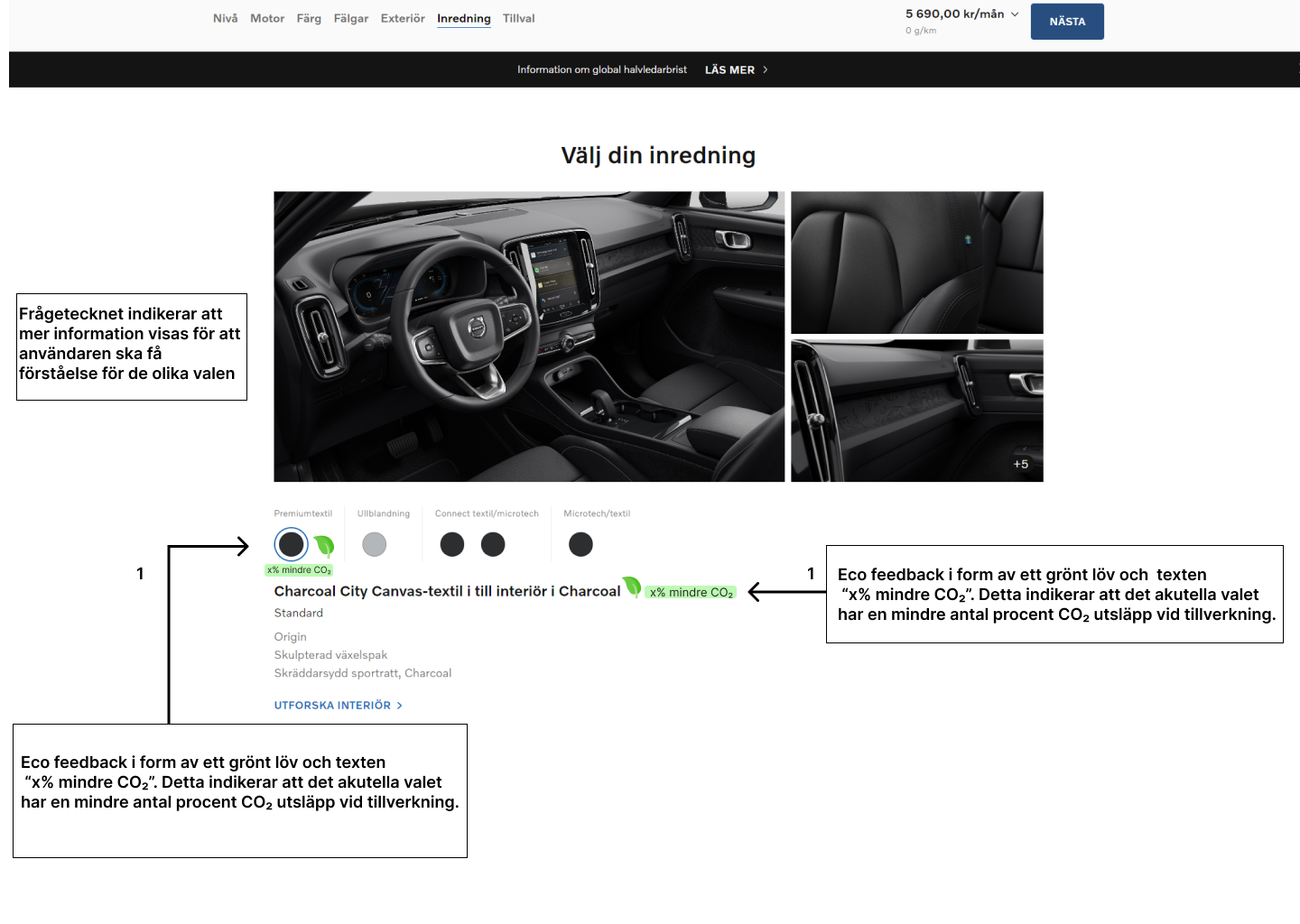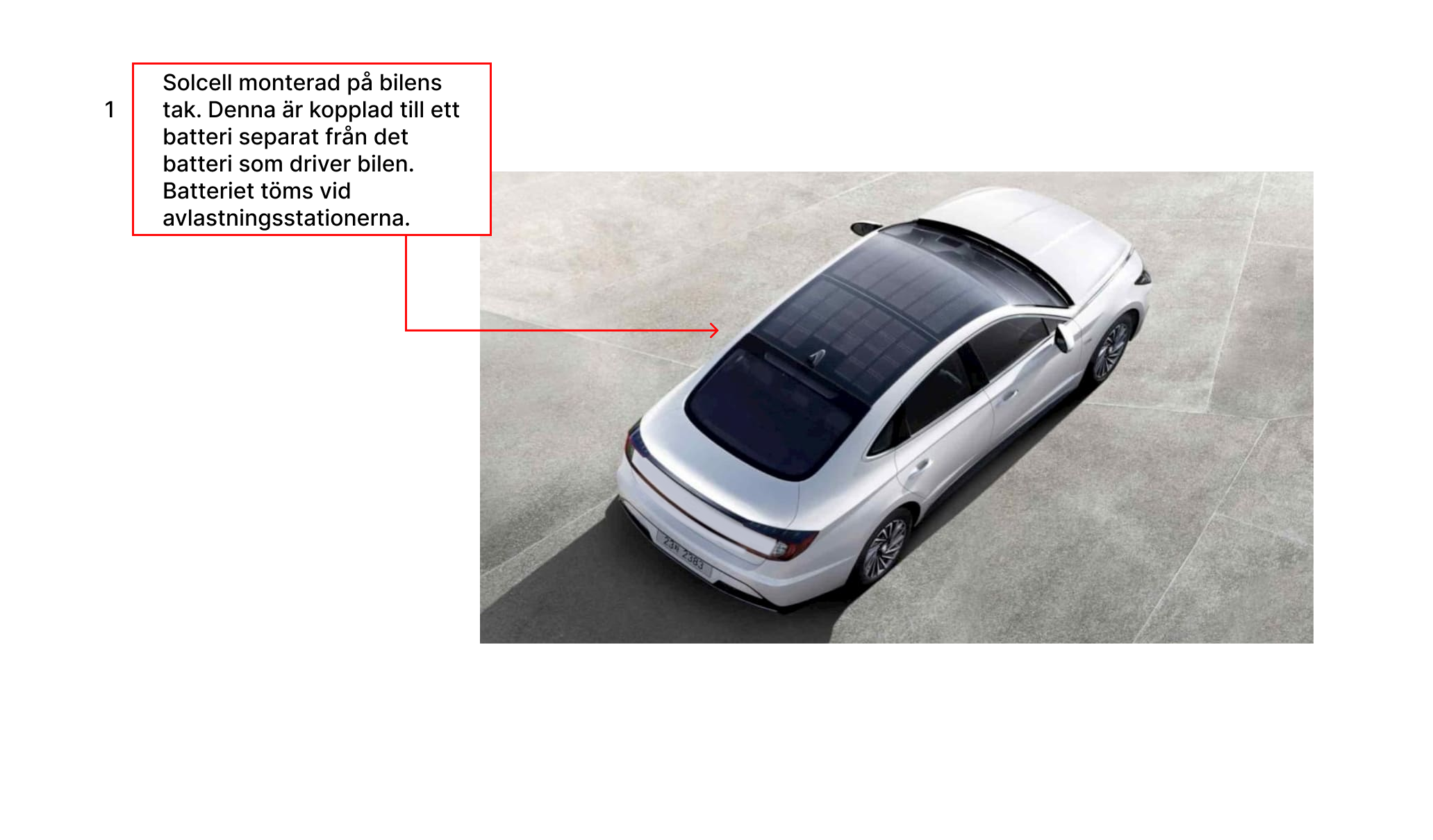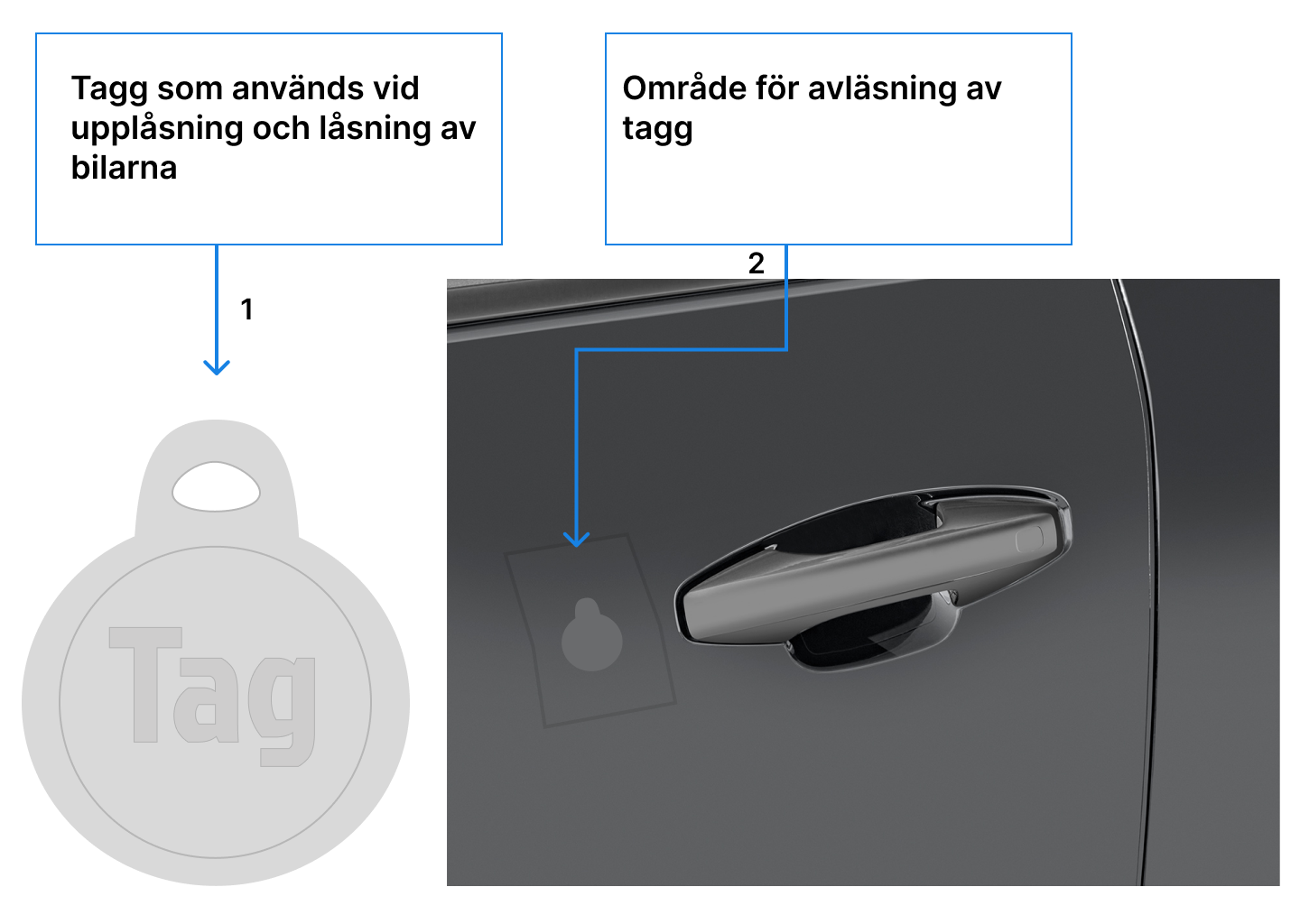Project: Care by volvo

Team: 5 people
Duration: 3 weeks

Team: 5 people
Duration: 3 weeks
Care by Volvo offers a car subscription service, but with all cars being newly manufactured, sustainability is a challenge. Our project aimed to tackle this by proposing three eco-friendly solutions. Imagine subscribing to a service, but being unsure if it's truly sustainable. Wouldn't it be great to have the option to choose recycled materials, solar-powered cars, or even share a car within your community?
During the course, we focused on sustainable design, addressing three dimensions: ecological, social, and economic sustainability. The goal was to explore how Care by Volvo’s service, which offers car subscriptions, could become more sustainable. The project aimed to develop solutions that:
Each week, we concentrated on one of the three sustainability dimensions. Our approach was to connect our solutions to Volvo’s existing service and investigate opportunities for sustainable innovation. We began by analyzing the challenges posed by Care by Volvo’s model, which offers only newly manufactured cars. Through concept development and design principles, we created solutions addressing ecological, social, and economic sustainability.
To address ecological sustainability, we developed a concept where users could choose recycled materials when designing their car. We introduced “eco-feedback,” a technique that provides users with information about the environmental impact of different material choices. This motivates more eco-friendly decisions by visualizing the emissions associated with production, thus reducing resource waste.

My team designed a concept for solar-powered cars. Solar panels would be installed on car roofs, allowing for energy collection while driving. This energy could be sold to energy companies, not only increasing the company’s revenue but also contributing to a greater supply of green energy in society. This concept links both economic and ecological sustainability by reducing the need for fossil fuels and creating financial incentives for the company.

We created a solution for social sustainability by designing an app that allows students in a housing association to share a car. Through this carpool system, more students can access transportation without needing to buy their own car. This reduces the individual’s financial burden while also lowering the number of cars in society, benefiting both social and ecological sustainability.

By taking an interdisciplinary approach and focusing on the ecological, social, and economic aspects of sustainability, we developed innovative solutions that can contribute to a more sustainable future for Care by Volvo and society as a whole.
This project aimed to promote accessibility with a focus on color blindness. The project resulted in a norm-critical workshop where people get to experience being color blind. The focus was to spread knowledge about what exclusion looks like today, which is necessary to create a more inclusive and sustainable society.